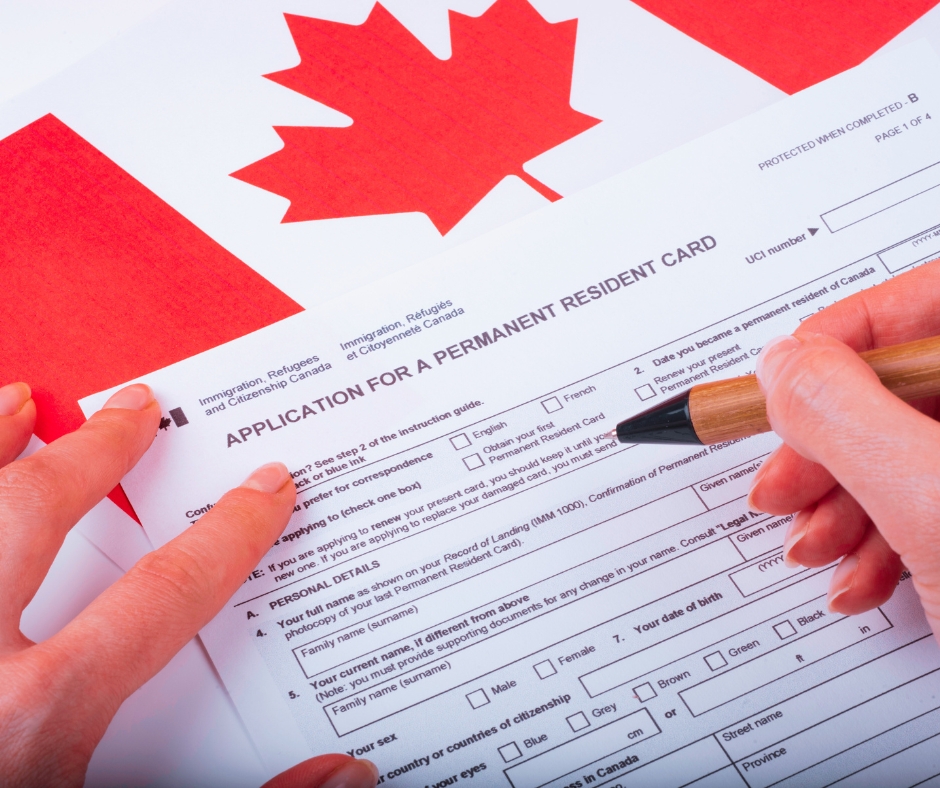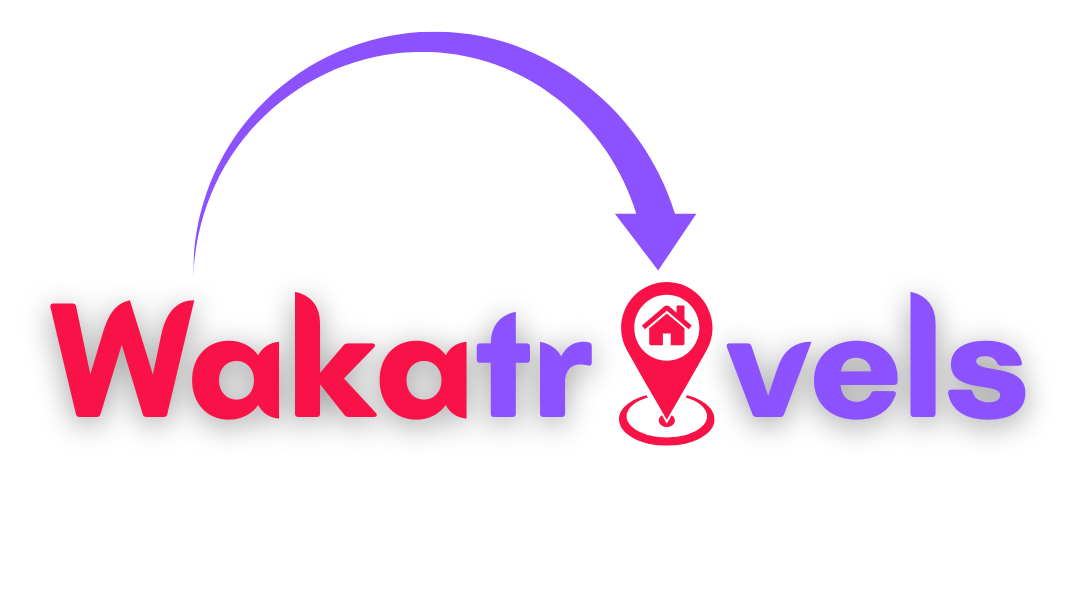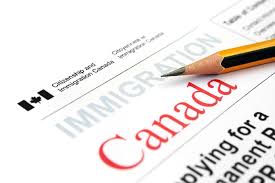The Ultimate Guide to Canada’s Permanent Residency Process in 2025
Ready to make the Great White North your permanent home? Let’s navigate the maple-lined path to Canadian permanent residency together!

I remember standing at the edge of Lake Ontario, the Toronto skyline reflecting in its waters, thinking, “Could this really become my home?” Maybe you’re feeling that same mix of excitement and uncertainty as you consider a move to Canada. You’re not alone – each year, thousands of dreamers like us look to Canada as their future home, drawn by its stunning landscapes, diverse communities, and robust economy.
But let’s be honest: the journey to permanent residency can feel like trekking through the Canadian Rockies – beautiful but challenging. With multiple pathways, constantly evolving requirements, and a sea of paperwork, it’s easy to feel overwhelmed.
That’s why I’ve created this comprehensive guide to help you navigate Canada’s permanent residency process in 2025. Whether you’re a skilled worker, international student, entrepreneur, or hoping to join family in Canada, this article will break down everything you need to know to make your Canadian dream a reality.
So grab a cup of hot chocolate (you’ll need to get used to those Canadian winters!), and let’s explore the path to your new life in the True North.
Main Pathways to Canadian Permanent Residency
1. Express Entry System
The Express Entry system is Canada’s flagship immigration pathway for skilled workers. Think of it as Canada’s way of rolling out the welcome mat for talented individuals who can contribute to the economy.
The system operates on a points-based model called the Comprehensive Ranking System (CRS). Your score is calculated based on factors like:
- Age: The sweet spot is typically between 20-29 years
- Education: Higher education levels score more points
- Work experience: Both Canadian and foreign experience count
- Language proficiency: Fluency in English and/or French
- Adaptability factors: Such as having relatives in Canada
How Express Entry Works:
- Create an online profile
- Get ranked in the Express Entry pool
- Receive an Invitation to Apply (ITA) if you meet the cutoff score
- Submit your complete application
- Wait for processing (typically 6-8 months)
Pro tip: Language proficiency can significantly boost your CRS score. I spent three months intensively practicing French before taking my test, and those extra points made all the difference in my application.
2. Provincial Nominee Programs (PNPs)
If Express Entry feels like a competitive national talent show, Provincial Nominee Programs are like getting a personal invitation from a province that wants exactly what you have to offer.
Each of Canada’s provinces and territories (except Quebec, which has its own system) runs its own PNP, tailored to address specific regional labor market needs. Some provinces focus on tech workers, others on healthcare professionals, and some on entrepreneurs or farmers.
Key PNPs to consider:
- Ontario Immigrant Nominee Program (OINP): Perfect for tech workers and graduates
- British Columbia Provincial Nominee Program (BC PNP): Strong focus on tech and healthcare
- Alberta Advantage Immigration Program: Opportunities in energy, agriculture, and tourism
- Saskatchewan Immigrant Nominee Program (SINP): Prioritizes agricultural experience
- Manitoba Provincial Nominee Program (MPNP): Features the new West Central Immigration Initiative
How PNPs typically work:
- Apply directly to the province OR be selected from the Express Entry pool
- Receive a provincial nomination
- Get 600 additional points in the Express Entry system (almost guaranteeing an ITA) OR apply directly for PR through the province
[Insert image of a map showing different Canadian provinces with their PNP focus areas]
3. Family Sponsorship
Love knows no borders, and Canada’s family sponsorship programs recognize that. If you have a spouse, common-law partner, dependent child, parent, or grandparent who is a Canadian citizen or permanent resident, they may be able to sponsor you.
Who can sponsor:
- Canadian citizens or permanent residents
- At least 18 years old
- Financially able to support sponsored family members
Who can be sponsored:
- Spouses and common-law partners
- Dependent children
- Parents and grandparents
- Orphaned siblings, nephews, nieces, or grandchildren under 18
The most straightforward path is spousal sponsorship, with processing times typically ranging from 12-16 months. Parent and grandparent sponsorship operates through a lottery system with limited annual slots.
4. Business Immigration
Have entrepreneurial dreams or significant investment capital? Canada welcomes business minds through several programs:
- Start-Up Visa Program: For entrepreneurs with innovative business ideas backed by designated Canadian investors
- Self-Employed Persons Program: For those who can contribute to Canada’s cultural, artistic, or athletic landscape
- Investor programs: Various provincial programs for those with capital to invest
These programs typically require detailed business plans, proof of funds, and demonstrated experience.
5. New Pathways for 2025
Canada continues to innovate with its immigration programs, and 2025 brings some exciting new options:
- Enhanced Caregiver Pilot Program: Expanded pathways for in-home caregivers
- Rural Community Immigration Pilot: Targeting smaller communities in need of population growth
- Francophone Community Immigration Pilot: Supporting French-speaking communities outside Quebec
- Manitoba’s West Central Immigration Initiative: Focusing on specific regions in Manitoba
These newer programs often have lower competition and could be your ticket to Canada if you fit their specific criteria.
Common Questions About Canadian Permanent Residency
What exactly is permanent residency?
Permanent residency (PR) gives you the right to live, work, and study anywhere in Canada indefinitely. It’s one step below citizenship but includes most of the same benefits. As a PR, you’ll receive a PR card as proof of your status, which you’ll need when traveling internationally.
What are the residency obligations for permanent residents?
This is crucial: To maintain your PR status, you must be physically present in Canada for at least 730 days (2 years) within every 5-year period. These days don’t need to be consecutive.
There are some exceptions to this rule, such as:
- Accompanying a Canadian spouse or common-law partner who works abroad
- Working abroad for a Canadian business
- Serving in the Canadian Armed Forces
I learned this the hard way when a friend nearly lost his PR status after spending too much time outside Canada for work. Make sure you track your days carefully!
Can international students transition to permanent residency?
Absolutely! In fact, Canada has one of the most straightforward study-to-PR pathways in the world. The typical route follows this path:
- Complete a Canadian post-secondary program
- Apply for a Post-Graduation Work Permit (PGWP)
- Gain Canadian work experience
- Apply for PR through the Canadian Experience Class (under Express Entry) or a PNP
Many of my friends who came as international students are now proud permanent residents. The key is to plan your education strategically, focusing on programs and institutions that will maximize your immigration potential.
How does language proficiency affect my PR application?
Language skills are absolutely critical for most Canadian immigration programs. You’ll need to take an approved language test like:
- IELTS or CELPIP for English
- TEF or TCF for French
Under Express Entry, language proficiency can contribute up to 260 points to your CRS score. That’s huge! Bilingual applicants (proficient in both English and French) receive additional points.
| CLB Level | Express Entry Points (First Language) | Express Entry Points (Second Language) |
| CLB 9+ | 136 | 24 |
| CLB 8 | 128 | 22 |
| CLB 7 | 116 | 20 |
| CLB 6 | 88 | 18 |
| CLB 5 | 64 | 16 |
| CLB 4 | 32 | 8 |
What are the benefits of becoming a Canadian permanent resident?
The benefits are substantial:
- Access to universal healthcare through provincial health insurance
- Free public education for children
- The right to live, work, and study anywhere in Canada
- Most social benefits available to citizens
- Protection under Canadian law
- Ability to apply for citizenship after 3 years
- Travel flexibility with a PR card
The healthcare benefit alone makes PR valuable. I remember my first winter in Canada, slipping on ice and breaking my wrist. The medical care I received without a crushing bill afterward made me appreciate my PR status even more.
What proof of funds do I need for PR applications?
For most Express Entry programs, you’ll need to demonstrate that you have enough money to support yourself and your family upon arrival in Canada. As of 2025, the requirements are:
| Family Size | Required Funds (CAD) |
| 1 | $14,350 |
| 2 | $17,873 |
| 3 | $21,985 |
| 4 | $26,683 |
| 5 | $30,254 |
| 6 | $34,113 |
| 7+ | $37,973 |
Note: These figures are updated annually. PNP programs and other pathways may have different requirements.
How is the CRS score calculated for Express Entry?
The Comprehensive Ranking System (CRS) score is calculated based on:
Core factors (up to 500 points):
- Age
- Education
- Language proficiency
- Canadian work experience
Spouse factors (up to 40 points):
- Education
- Language proficiency
- Canadian work experience
Skill transferability (up to 100 points):
- Education + language
- Education + Canadian work experience
- Foreign work experience + language
- Foreign work experience + Canadian work experience
- Certificate of qualification + language
Additional points (up to 600 points):
- Provincial nomination
- Job offer
- Canadian education
- French language skills
- Sibling in Canada
The maximum possible score is 1,200 points.
[Insert image of a CRS score calculator or visual representation]
Can I sponsor family members once I become a PR?
Yes! One of the great benefits of PR status is the ability to sponsor certain family members:
- Spouse or common-law partner
- Dependent children
- Parents and grandparents (through the Parents and Grandparents Program)
The sponsorship process requires you to:
- Prove your relationship
- Meet income requirements
- Sign an undertaking to financially support your family member
- For parents and grandparents, sign a sponsorship agreement for 20 years
What is the Start-Up Visa Program?
The Start-Up Visa Program targets innovative entrepreneurs with the skills and potential to build businesses in Canada that:
- Are innovative
- Can create jobs for Canadians
- Can compete globally
To qualify, you need:
- A qualifying business
- A letter of support from a designated organization (venture capital fund, angel investor group, or business incubator)
- Proof of funds to settle
- Language proficiency (minimum CLB 5)
The processing time is typically 12-16 months, making it faster than many other business immigration programs globally.
Top Canadian Destinations for New Permanent Residents
Choosing where to settle in Canada is as important as choosing your immigration pathway. Each region offers different opportunities, cultures, and lifestyles. Here are some top destinations to consider:
1. Toronto, Ontario
Why it’s great: As Canada’s largest city, Toronto is a multicultural hub with abundant job opportunities, especially in finance, tech, and healthcare. The diverse neighborhoods make it easy to find a community that feels like home.
Immigration advantage: High CRS scores for Express Entry candidates with job offers in Toronto; multiple Ontario PNP streams.
Must visit: CN Tower, Kensington Market, Toronto Islands
2. Vancouver, British Columbia
Why it’s great: Nestled between mountains and the ocean, Vancouver offers an outstanding quality of life with mild winters and a thriving tech industry.
Immigration advantage: BC PNP Tech stream for tech workers; entrepreneur pathways for business-minded immigrants.
Must visit: Stanley Park, Granville Island, Capilano Suspension Bridge
3. Montreal, Quebec
Why it’s great: A slice of Europe in North America, Montreal blends French and English cultures in a vibrant, artistic city with reasonable living costs.
Immigration advantage: Quebec has its own immigration system, with advantages for French speakers through the Quebec Experience Program.
Must visit: Old Montreal, Mount Royal, Jean-Talon Market
4. Calgary, Alberta
Why it’s great: With the Rocky Mountains on its doorstep, Calgary offers outdoor adventure alongside a robust economy centered on energy, agriculture, and increasingly, technology.
Immigration advantage: Alberta Advantage Immigration Program offers opportunities for candidates with lower CRS scores who might not qualify through Express Entry.
Must visit: Calgary Stampede, Banff National Park (nearby), Heritage Park
5. Winnipeg, Manitoba
Why it’s great: Canada’s gateway to the prairies offers affordable housing, strong community ties, and growing opportunities in manufacturing and healthcare.
Immigration advantage: Home to Manitoba’s new West Central Immigration Initiative, MPNP has historically had high approval rates.
Must visit: The Forks, Canadian Museum for Human Rights, Assiniboine Park
6. Halifax, Nova Scotia
Why it’s great: This coastal gem offers maritime charm, friendly communities, and a growing tech sector, all at a more relaxed pace than larger cities.
Immigration advantage: Part of the Atlantic Immigration Pilot, which offers streamlined processes for those willing to settle in Atlantic provinces.
Must visit: Halifax Citadel, Peggy’s Cove, Halifax Waterfront
7. Ottawa, Ontario
Why it’s great: As Canada’s capital, Ottawa offers stable government jobs, excellent education, and a high quality of life with beautiful green spaces.
Immigration advantage: Strong job market for bilingual professionals; various Ontario PNP streams.
Must visit: Parliament Hill, Rideau Canal, National Gallery of Canada
8. Quebec City, Quebec
Why it’s great: With its walled old town and European feel, Quebec City offers history, culture, and charm alongside a growing job market.
Immigration advantage: Part of the Francophone Community Immigration Pilot; excellent for French speakers.
Must visit: Old Quebec, Château Frontenac, Montmorency Falls
9. Saskatoon, Saskatchewan
Why it’s great: Known as the “Paris of the Prairies,” Saskatoon offers affordable living, strong communities, and opportunities in agriculture and resource industries.
Immigration advantage: Saskatchewan Immigrant Nominee Program often has lower thresholds than Express Entry.
Must visit: Wanuskewin Heritage Park, Meewasin Valley, Remai Modern Art Gallery
10. Charlottetown, PEI
Why it’s great: This charming island capital offers a quieter lifestyle with stunning coastal scenery and tight-knit communities.
Immigration advantage: Part of the Atlantic Immigration Pilot; PEI PNP offers entrepreneur streams.
Must visit: Green Gables Heritage Place, Victoria Row, PEI National Park
Steps to Prepare for Your Canadian PR Journey
1. Assess Your Eligibility
Before diving into applications, take time to understand which pathways suit your profile:
- Use the Come to Canada tool on the IRCC website
- Calculate your potential CRS score
- Research PNP requirements for the provinces you’re interested in
2. Gather Your Documents
Start collecting important documents early:
- Educational credentials (with ECA if needed)
- Language test results
- Employment references
- Identity documents
- Police certificates
- Medical exam results
Pro tip: Some documents take months to obtain, so start early! I waited three months for my police certificate from a previous country of residence.
3. Improve Your Profile
While preparing your application, work on strengthening your profile:
- Enhance language skills
- Gain additional work experience
- Pursue further education
- Research specific provincial programs
- Network with potential employers in Canada
4. Secure Finances
Ensure you have:
- Proof of funds as required by your program
- Moving expenses budgeted
- Settlement funds for your first few months in Canada
5. Research Settlement Services
Canada offers numerous resources for newcomers:
- Pre-arrival services
- Settlement agencies
- Language training programs
- Employment assistance
I found my first job in Canada through a newcomer employment program. These services are invaluable!
Common Challenges and How to Overcome Them
Challenge #1: Meeting Language Requirements
Solution: Start language preparation early. Take practice tests, enroll in courses, find conversation partners, and immerse yourself in English or French media. Remember, even a half-point improvement can significantly impact your CRS score.
Challenge #2: Document Authentication
Solution: Research requirements for each document in advance. Some countries require additional steps like apostille or embassy authentication. Budget extra time for this process.
Challenge #3: Finding Employment
Solution: Begin networking before arrival. Connect with professionals in your field on LinkedIn, research Canadian resume formats, and consider working with recruiters who specialize in newcomer placement.
Challenge #4: Credential Recognition
Solution: Start the Educational Credential Assessment (ECA) process early. Research regulatory bodies for your profession and understand licensing requirements before arrival.
Challenge #5: Adapting to Canadian Culture
Solution: Connect with community groups from your home country while also embracing Canadian customs. Cultural integration programs are available in most cities to help you adjust.
Conclusion
The journey to Canadian permanent residency is complex but rewarding. Whether you’re drawn by Canada’s natural beauty, economic opportunities, cultural diversity, or social programs, there’s a pathway designed for someone with your unique skills and background.
Remember, immigration is a marathon, not a sprint. The process requires patience, preparation, and persistence. But as someone who has walked this path, I can tell you the maple-lined streets are worth the journey.
Are you ready to take the first step toward calling Canada home? Start by assessing your eligibility, gathering your documents, and envisioning your new life in the True North, Strong and Free.
What questions do you have about the Canadian permanent residency process? Drop them in the comments below, and I’ll do my best to help you navigate your journey!




